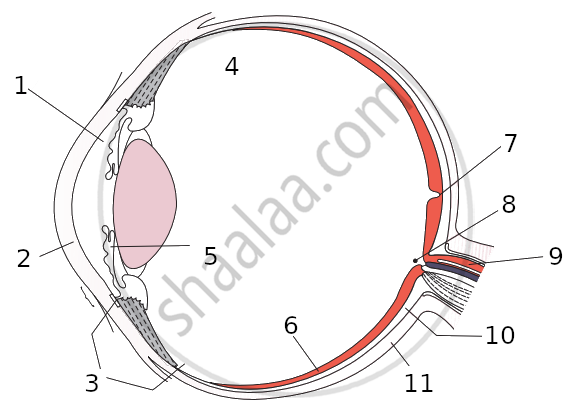Advertisements
Advertisements
Question
What is a lacrimal gland?
Solution
Lacrimal gland is a tear gland located at the upper sideward portion of the eye orbit. Its secreation lubricates the surface of the eye, washes always the dust particles and kills germs
APPEARS IN
RELATED QUESTIONS
Describe the anatomy of the human eye.
The optical prescription for a pair of spectacles is :
Right eye : −3.50 D
Left eye : −4.00 D
Which lens has a greater focal length?
Name the part of the eye:
on which the image is formed.
What is the name of:
the light-sensitive layer in the eye?
Where is the image formed in a human eye?
Give the scientific names of the following parts of the eye:
carries signals from an eye to the brain.
Fill in the following blank with suitable word:
Most of the refraction of light rays entering the eye occurs at the outer surface of the.............
The eyes of a person are focused (i) on a nearby object, and (ii) on a distant object, turn by turn. In which case:
the converging power of eye-lens will be the maximum?
Name the cells on the retina of an eye which are sensitive to (i) bright light (ii) dim light (iii) sensation of colour.
Refraction of light in the eye occurs at:
(a) the lens only
(b) the cornea only
(c) both the cornea and the lens
(d) the pupil
Nocturnal animals (animals which sleep during the day and come out at night) tend to have wide pupils and lot of rods in their retinas. Suggest reasons for this.
Give the main function of the following:
Lachrymal glands
Complete the following sentence with appropriate Word
The aperture in the eye through which light enters is the:
______ is the structural and functional unit of living organisms.
A person cannot see distinctly objects kept beyond 2 m. This defect can be corrected by using a lens of power
Which one of the following statements is NOT correct?
Select the option with incorrect identification:

Which cells of the retina enable us to see coloured objects around us?
The change in the focal length of an eye lens in human beings is caused by the action of ______.
State the functions of the following:
Ciliary muscles
